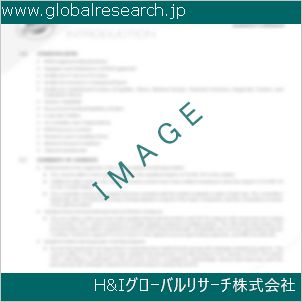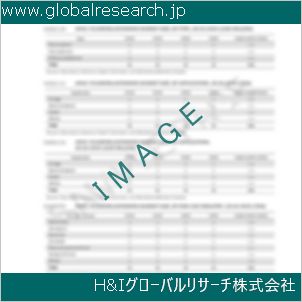Table of Contents
1 Industry Overview of Activated alumina
1.1 Definition and Specifications of Activated alumina
1.1.1 Definition of Activated alumina
1.1.2 Specifications of Activated alumina
1.2 Classification of Activated alumina
1.3 Applications of Activated alumina
1.3.1 Nuclear Application
1.3.2 Non-Nuclear Application
1.4 Industry Chain Structure of Activated alumina
1.5 Industry Overview and Major Regions Status of Activated alumina
1.5.1 Industry Overview of Activated alumina
1.5.2 Global Major Regions Status of Activated alumina
1.6 Industry Policy Analysis of Activated alumina
1.7 Industry News Analysis of Activated alumina
2 Manufacturing Cost Structure Analysis of Activated alumina
2.1 Raw Material Suppliers and Price Analysis of Activated alumina
2.2 Equipment Suppliers and Price Analysis of Activated alumina
2.3 Labor Cost Analysis of Activated alumina
2.4 Other Costs Analysis of Activated alumina
2.5 Manufacturing Cost Structure Analysis of Activated alumina
2.6 Manufacturing Process Analysis of Activated alumina
3 Technical Data and Manufacturing Plants Analysis of Activated alumina
3.1 Capacity and Commercial Production Date of Global Activated alumina Major Manufacturers in 2023
3.2 Manufacturing Plants Distribution of Global Activated alumina Major Manufacturers in 2023
3.3 R&D Status and Technology Source of Global Activated alumina Major Manufacturers in 2023
3.4 Raw Materials Sources Analysis of Global Activated alumina Major Manufacturers in 2023
4 Capacity, Production and Revenue Analysis of Activated alumina by Regions, Types and Manufacturers
4.1 Global Capacity, Production and Revenue of Activated alumina by Regions 2019-2024
4.2 Global and Major Regions Capacity, Production, Revenue and Growth Rate of Activated alumina 2019-2024
4.3 Global Capacity, Production and Revenue of Activated alumina by Types 2019-2024
4.4 Global Capacity, Production and Revenue of Activated alumina by Manufacturers 2019-2024
5 Price, Cost, Gross and Gross Margin Analysis of Activated alumina by Regions, Types and Manufacturers
5.1 Price, Cost, Gross and Gross Margin Analysis of Activated alumina by Regions 2019-2024
5.2 Price, Cost, Gross and Gross Margin Analysis of Activated alumina by Types 2019-2024
5.3 Price, Cost, Gross and Gross Margin Analysis of Activated alumina by Manufacturers 2019-2024
6 Consumption Volume, Consumption Value and Sale Price Analysis of Activated alumina by Regions, Types and Applications
6.1 Global Consumption Volume and Consumption Value of Activated alumina by Regions 2019-2024
6.2 Global and Major Regions Consumption Volume, Consumption Value and Growth Rate of Activated alumina 2019-2024
6.3 Global Consumption Volume and Consumption Value of Activated alumina by Types 2019-2024
6.4 Global Consumption Volume and Consumption Value of Activated alumina by Applications 2019-2024
6.5 Sale Price of Activated alumina by Regions 2019-2024
6.6 Sale Price of Activated alumina by Types 2019-2024
6.7 Sale Price of Activated alumina by Applications 2019-2024
6.8 Market Share Analysis of Activated alumina by Different Sale Price Levels
7 Supply, Import, Export and Consumption Analysis of Activated alumina
7.1 Supply, Consumption and Gap of Activated alumina 2019-2024
7.2 Global Capacity, Production, Price, Cost, Revenue, Supply, Import, Export and Consumption of Activated alumina 2019-2024
7.3 USA Capacity, Production, Price, Cost, Revenue, Supply, Import, Export and Consumption of Activated alumina 2019-2024
7.4 EU Capacity, Production, Price, Cost, Revenue, Supply, Import, Export and Consumption of Activated alumina 2019-2024
7.5 China Capacity, Production, Price, Cost, Revenue, Supply, Import, Export and Consumption of Activated alumina 2019-2024
7.6 Japan Capacity, Production, Price, Cost, Revenue, Supply, Import, Export and Consumption of Activated alumina 2019-2024
8 Major Manufacturers Analysis of Activated alumina
8.1 Manufacturer One
8.1.1 Company Profile
8.1.2 Product Picture and Specifications
8.1.2.1 Type I
8.1.2.2 Type II
8.1.2.3 Type III
8.1.3 Capacity, Production, Price, Cost, Gross and Revenue
8.1.4 Contact Information
8.2 Manufacturer Two
8.2.1 Company Profile
8.2.2 Product Picture and Specifications
8.2.2.1 Type I
8.2.2.2 Type II
8.2.2.3 Type III
8.2.3 Capacity, Production, Price, Cost, Gross and Revenue
8.2.4 Contact Information
8.3 Manufacturer Three
8.3.1 Company Profile
8.3.2 Product Picture and Specifications
8.3.2.1 Type I
8.3.2.2 Type II
8.3.2.3 Type III
8.3.3 Capacity, Production, Price, Cost, Gross and Revenue
8.3.4 Contact Information
8.4 Manufacturer Four
8.4.1 Company Profile
8.4.2 Product Picture and Specifications
8.4.2.1 Type I
8.4.2.2 Type II
8.4.2.3 Type III
8.4.3 Capacity, Production, Price, Cost, Gross and Revenue
8.4.4 Contact Information
8.5 Manufacturer Five
8.5.1 Company Profile
8.5.2 Product Picture and Specifications
8.5.2.1 Type I
8.5.2.2 Type II
8.5.2.3 Type III
8.5.3 Capacity, Production, Price, Cost, Gross and Revenue
8.5.4 Contact Information
…
9 Marketing Trader or Distributor Analysis of Activated alumina
9.1 Marketing Channels Status of Activated alumina
9.2 Traders or Distributors with Contact Information of Activated alumina by Regions
9.3 Ex-work Price, Channel Price and End Buyer Price Analysis of Activated alumina
9.4 Regional Import, Export and Trade Analysis of Activated alumina
10 Industry Chain Analysis of Activated alumina
10.1 Upstream Major Raw Materials Suppliers Analysis of Activated alumina
10.1.1 Major Raw Materials Suppliers with Contact Information Analysis of Activated alumina
10.1.2 Major Raw Materials Suppliers with Supply Volume Analysis of Activated alumina by Regions
10.2 Upstream Major Equipment Suppliers Analysis of Activated alumina
10.2.1 Major Equipment Suppliers with Contact Information Analysis of Activated alumina
10.2.2 Major Equipment Suppliers with Product Pictures Analysis of Activated alumina by Regions
10.3 Downstream Major Consumers Analysis of Activated alumina
10.3.1 Major Consumers with Contact Information Analysis of Activated alumina
10.3.2 Major Consumers with Consumption Volume Analysis of Activated alumina by Regions
10.4 Supply Chain Relationship Analysis of Activated alumina
11 Development Trend of Analysis of Activated alumina
11.1 Capacity, Production and Revenue Forecast of Activated alumina by Regions and Types
11.1.1 Global Capacity, Production and Revenue of Activated alumina by Regions 2024-2029
11.1.2 Global and Major Regions Capacity, Production, Revenue and Growth Rate of Activated alumina 2024-2029
11.1.3 Global Capacity, Production and Revenue of Activated alumina by Types 2024-2029
11.2 Consumption Volume and Consumption Value Forecast of Activated alumina by Regions, Types and Applications
11.2.1 Global Consumption Volume and Consumption Value of Activated alumina by Regions 2024-2029
11.2.2 Global and Major Regions Consumption Volume, Consumption Value and Growth Rate of Activated alumina 2024-2029
11.2.3 Global Consumption Volume and Consumption Value of Activated alumina by Types 2024-2029
11.2.4 Global Consumption Volume and Consumption Value of Activated alumina by Applications 2024-2029
11.3 Supply, Import, Export and Consumption Forecast of Activated alumina
11.3.1 Supply, Consumption and Gap of Activated alumina 2024-2029
11.3.2 Global Capacity, Production, Price, Cost, Revenue, Supply, Import, Export and Consumption of Activated alumina 2024-2029
11.3.3 USA Capacity, Production, Price, Cost, Revenue, Supply, Import, Export and Consumption of Activated alumina 2024-2029
11.3.4 EU Capacity, Production, Price, Cost, Revenue, Supply, Import, Export and Consumption of Activated alumina 2024-2029
11.3.5 China Capacity, Production, Price, Cost, Revenue, Supply, Import, Export and Consumption of Activated alumina 2024-2029
11.3.6 Japan Capacity, Production, Price, Cost, Revenue, Supply, Import, Export and Consumption of Activated alumina 2024-2029
12 New Project Investment Feasibility Analysis of Activated alumina
12.1 New Project SWOT Analysis of Activated alumina
12.2 New Project Investment Feasibility Analysis of Activated alumina
13 Conclusion of the Global Activated alumina (CAS 1344-28-1) Industry 2024 Market Research Report
| ※参考情報 活性アルミナは、酸化アルミニウムの一種であり、その特有の物理的及び化学的性質により、さまざまな産業で広く利用されています。CAS番号1344-28-1で知られるこの物質は、特に高い比表面積を持ち、多孔性の構造を持つため、優れた吸着能力を発揮します。 活性アルミナの定義は、酸化アルミニウム(Al2O3)が特定の処理を通じて生成される多孔質の材料です。この処理は、通常、オーブンでの加熱や化学薬品の使用によって実現されます。結果として得られる材料は、高い吸着性に加え、耐熱性や耐薬品性も備えています。 活性アルミナの特徴の一つは、その物理的特性です。具体的には、高比表面積と多孔性の構造が挙げられます。これにより、気体や液体の分子を効率的に吸着することができるため、乾燥剤、触媒担体、あるいは粗悪な水質の改善など、さまざまな用途に利用されます。また、この材料はアモルファス(非晶質)と結晶性の両方の形態を持つことができ、その性質を利用して異なる機能を果たすことも可能です。 活性アルミナの種類には主に、スファリカル活性アルミナ、コート活性アルミナ、粒子状活性アルミナ、焼結活性アルミナなどがあります。それぞれのタイプは、用途や必要とされる特性に応じて選定されます。例えば、スファリカル活性アルミナは、その形状が均一で流動性が良いため、工業的なプロセスでの充填材として使用されています。一方、粒子状活性アルミナは、特定のサイズに加工され、特定の吸着特性を持たせることができます。 活性アルミナの用途は非常に多岐にわたります。最も一般的な用途の一つは、乾燥剤としての使用です。湿気を吸着する能力が高いため、電子機器の包装、大気中の水分除去などに利用されています。また、水処理プロセスにおいても、重金属や有機汚染物質を吸着するためのフィルター材料として利用されています。さらに、石油化学産業や製薬業界においても、触媒の担体として重要な役割を果たしています。 関連技術としては、吸着および脱着技術が挙げられます。活性アルミナは、特定の化学物質や水分を捕捉し、必要に応じてその物質を放出することが可能です。この特性を利用したシステムは、環境保護やエネルギー効率の向上に寄与しています。また、最近では、ナノ技術との統合が進んでおり、ナノサイズの活性アルミナが開発され、より高い機能性を持った材料の創出が図られています。 さらに、活性アルミナは医療分野でも注目されています。特に、薬物の制御放出デバイスやバイオセンサーの製造に利用されています。活性アルミナの特性を活かした新しい製品の開発は続いており、特に環境問題が深刻化する中で、持続可能な材料としての期待が高まっています。 以上のように、活性アルミナはその特有の物理的・化学的特性から、様々な産業で不可欠な材料とされています。今後もその利用範囲は広がり続けると考えられ、持続可能な開発目標に貢献する重要な要素となるでしょう。これからも活性アルミナに関する研究や技術開発が進むことで、さらなる活用が期待されています。 |
❖ 免責事項 ❖
http://www.globalresearch.jp/disclaimer












